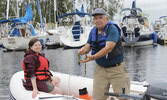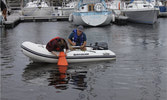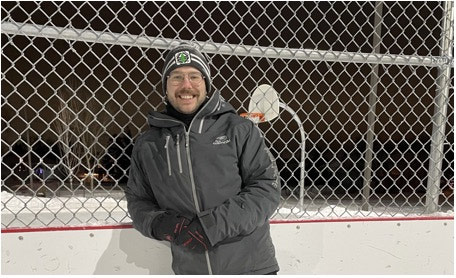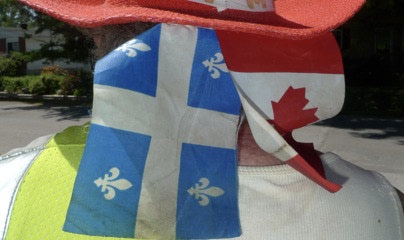CVGR Sailing Club commissions study on invasive species in Aylmer Marina
Greg Newing
Local biologists began to track the spread of Eurasian Watermilfoil, a harmful invasive species, in the Aylmer marina on Friday September 8. The study was commissioned by the Aylmer sailing club (Centre de Voile Grande-Rivière - CVGR) with financial support from the city after a large amount of weed growth was observed.
Biologists Pascal Samson and Marion Duflos located watermilfoil growth patches and distinguished them from other harmless native species using an aquascope and GPS device. Both Samson and Duflos work for Agence de Bassin Versant des 7 (ABV-7), a non-profit organization which promotes sustainable watershed management and was hired to carry out the project. Duflos, who is the Director of ABV-7, said this is the first study of its kind that has been carried out in a marina in the Outaouais and on the Quebec side of the Ottawa river.
Eurasian Watermilfoil originated in the Black Sea region, but is now widespread throughout North America. Once established, the weeds begin to displace other plants and can cause structural changes to the bottom of the river. Samson, project coordinator for ABV-7 and professor at La Cité, said that the weeds affect marine life by making the area impossible for fish reproduction and reducing the amount of oxygen in the water. He added that the plants can increase the likelihood of bacteria growth such as E.coli and, when densely concentrated, also produce toxins which can lead to rashes, eye irritation, diarrhea and other symptoms for humans.
Samson explained that the weeds are introduced into bodies of water by boats that are not properly cleaned before being launched. Existing weeds are then spread further when cut and dispersed by propellors, “The problem comes when a boat is moved from one body of water to another without being cleaned. All it takes is a small fragment of the plant attached to the boat and the weeds begin to spread very quickly,” said Samson.
While the weeds are difficult to eradicate, they can be diminished though covering high growth areas with environmentally safe fabric such as burlap and geotextile. To prevent further spread within the river and to other bodies of water, Samson said a boat washing station will also need to be installed near the public ramp. “We need a combination of solutions to control the spread. We won’t be able to eliminate it unfortunately, but we can reduce it,” said Samson.
While appreciative of the initial funding for the study, Vice Commadore of the CVGR Marcel Lalonde hopes that the city will continue to support the more difficult task of reducing the infestation, “The study is the first step but preventing further growth is going to be much harder. We are doing our best to be proactive but we won’t be able to do everything that’s needed on our own,” said Lalonde.
Photo caption 1:
Biologists Pascal Samson and Marion Duflos at the Aylmer Marina holding sample of Eurasian Watermilfoil, an invasive species widespread throughout the region.
Photo credit: Greg Newing
Photo caption 2:
Biologists Marion Duflos and Pascal Samson using an aquascope to map out the spread of Eurasian Watermilfoil in the Aylmer Marina.
Photo credit: Greg Newing







